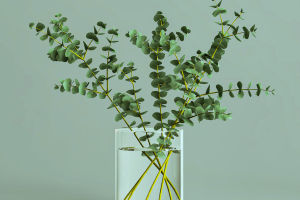Keeping flowers can be challenging, as each flower has its unique habits and preferences, requiring different care methods.
The Jade Plant (also called Crassula Ovata), for example, boasts beautiful green leaves, giving off a vibrant and soothing vibe.
However, some flower enthusiasts may find it difficult to maintain. Check the practical tips to cultivate a healthy and lush Jade Plant.
1. Provide ample sunlight for Jade Plant
Jade Plants thrive in bright sunlight, so it's common for people to keep them indoors. However, exposing your Jade Plant to sunlight for a short period can promote better growth and result in firmer leaves that won't droop or wilt.
If you notice your Jade Plant's leaves appearing weak or lacking firmness, it is likely due to insufficient light.
Additionally, adequate sunlight promotes a sturdier main trunk, which is essential if you desire the appearance of an old, well-established plant. However, it's important to be mindful of the duration of sunlight exposure.
Prolonged exposure to intense sunlight can cause the leaves to wither and negatively impact subsequent growth.
2. Protect Jade Plant from frostbite
Winter is a season of concern for many flower enthusiasts, and it is particularly crucial to pay attention to your Jade Plant during this time. The Jade Plant, with its splendid beauty, takes several years to cultivate and withstands numerous cold winters.
To prevent frostbite, it's essential to shield your Jade Plant from freezing temperatures. If the tissues of the Jade Plant are damaged due to frostbite, its growth may be stunted, and it may not flourish as vigorously as before.
The ideal temperature range for the Jade Plant's growth is between 20-30℃ during the spring and fall. In the summer, high temperatures should be avoided by providing shade and protecting it from direct sunlight. When the temperature exceeds 38℃, the growth rate slows down.
In winter, it should be kept indoors in a sunny spot, maintaining a room temperature environment of 7-10℃. Temperatures below 0℃ can cause it to freeze and die.
winter arrives, it is advisable to keep the Jade Plant indoors, ensuring proper insulation by closing windows. Alternatively, you can increase the temperature by using a heater, effectively preventing frostbite.
3. Pruning for a beautiful Jade Plant
The leaves and branches of the Jade Plant tend to be thick and heavy, making them susceptible to drooping and creating an illusion of wilting. However, this is primarily caused by the weight of the branches and trunk.
To prevent this, regular pruning is necessary to guide the plant's growth and maintain its aesthetic appeal. Additionally, as the Jade Plant grows, its shape can become irregular. Through pruning, you can control its growth and cultivate a more visually pleasing form.
Pruning the top branches, for example, can enhance apical dominance, stimulate the growth of new shoots and branches, and increase the likelihood of flowering. It is also recommended to prune during winter to remove certain branches, which can help prevent frostbite.
4. Ensure proper ventilation for Jade Plant
Jade Plants are generally resistant to pests and diseases. However, some individuals may encounter white spots on the leaves of their Jade Plants.
In reality, this issue is often a result of insufficient ventilation rather than pests or fungal infections. An airtight environment tends to foster the growth of fungi. If you notice white spots on your Jade Plant's leaves, simply washing them off with water should suffice.
Additionally, while fertilization is important, Jade Plants are not particularly demanding in this regard and can thrive with regular fertilization practices.


